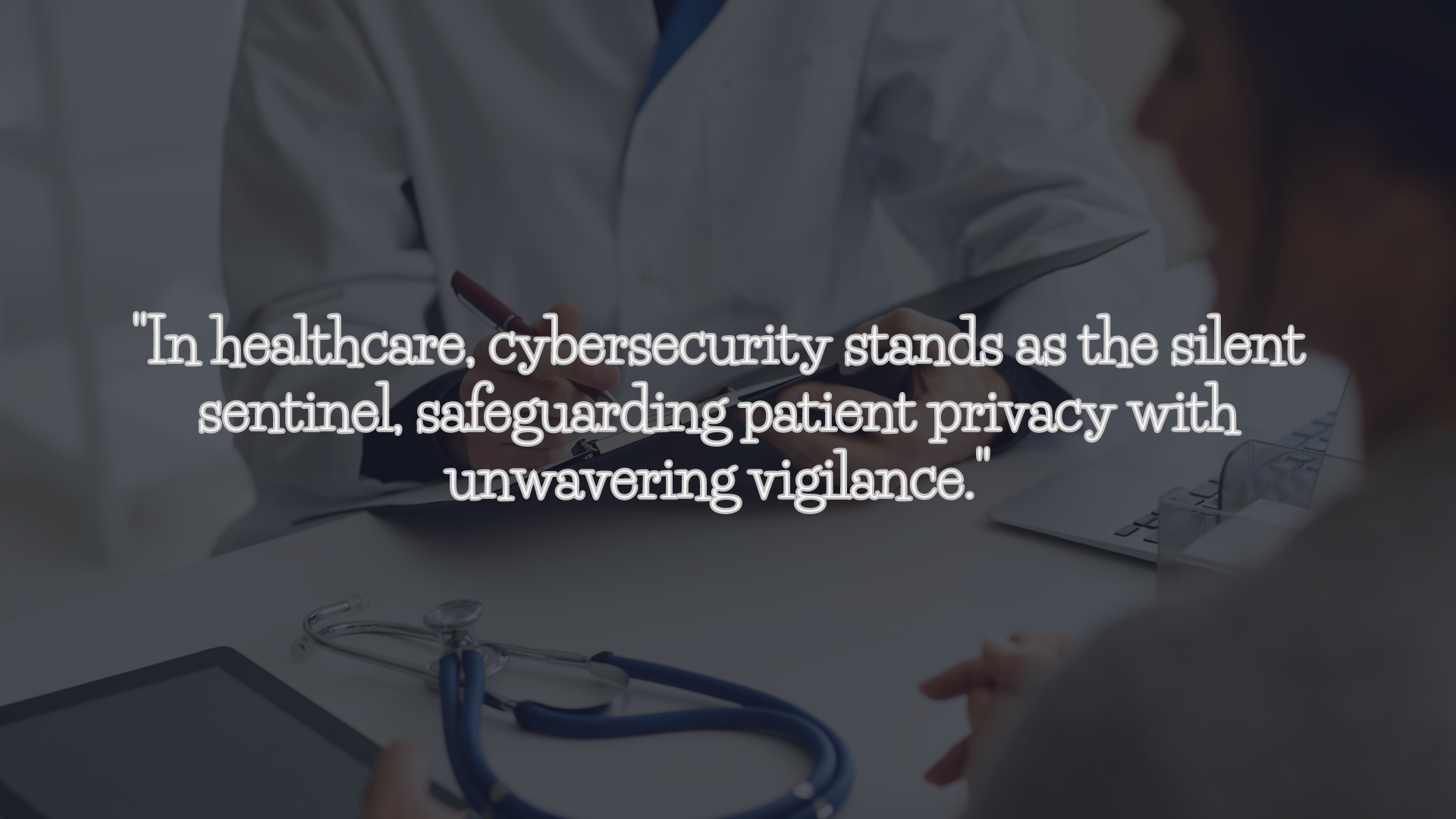
In today’s interconnected world, the healthcare industry is at the forefront of digital transformation, leveraging technology to enhance patient care and streamline operations. However, this digital revolution also brings with it significant cybersecurity challenges, particularly concerning the protection of sensitive patient information. As the custodians of vast amounts of medical and financial data, healthcare organisations face relentless cyber threats from malicious actors seeking to exploit vulnerabilities for financial gain or to disrupt critical services.
This article delves into the pivotal role of cybersecurity in safeguarding patient privacy, exploring common threats, preventive measures, and innovative solutions reshaping the healthcare cybersecurity landscape.
The significance of cybersecurity in healthcare
Healthcare organisations are entrusted with an abundance of sensitive data, including patient medical records, billing information, and personally identifiable information (PII). The theft or unauthorised access to this data can have severe repercussions, ranging from financial fraud and identity theft to reputational damage and compromised patient care. Moreover, the healthcare sector is subject to stringent regulatory requirements, such as the Health Insurance Portability and Accountability Act (HIPAA) and the Health Information Technology for Economic and Clinical Health (HITECH) Act, mandating the protection of patient privacy and the security of electronic health records (EHRs). In this complex landscape, cybersecurity emerges as a critical imperative, ensuring the confidentiality, integrity, and availability of healthcare data while upholding patient trust and regulatory compliance.
Key stakeholders in healthcare security
Securing patient privacy involves collaboration among various stakeholders within the healthcare ecosystem.
Patients
While patients are not typically involved in cybersecurity operations, they play a crucial role in safeguarding their own data by providing accurate information and remaining vigilant against potential threats.
Healthcare providers
Physicians, nurses, and other medical professionals interact directly with patient data during diagnosis, treatment, and billing processes, making them essential stakeholders in ensuring data security and privacy.
Hospitals and clinics
Healthcare facilities serve as custodians of patient records and are responsible for implementing robust security measures to protect against cyber threats.
Health insurance companies
Insurers handle vast amounts of patient data to assess eligibility and process claims, necessitating stringent cybersecurity measures to safeguard sensitive information.
Healthcare IT and data management companies
Providers of healthcare information systems, electronic health records (EHRs), and data analytics platforms play a pivotal role in developing and maintaining secure infrastructure and applications to support healthcare operations.
Common cyber threats in healthcare
The healthcare sector faces a diverse range of cyber threats, each posing unique challenges to patient privacy and data security:
Data breaches
Unauthorised access or disclosure of sensitive patient information, often resulting from vulnerabilities in systems or human error.
Insider threats
Malicious or negligent actions by individuals with authorised access to healthcare systems pose significant data confidentiality and integrity risks.
Ransomware attacks
Malicious software encrypts data, rendering it inaccessible until a ransom is paid, disrupting healthcare operations and compromising patient care.
Phishing attacks
Social engineering techniques are used to deceive individuals into disclosing sensitive information or downloading malware, exploiting human vulnerabilities to gain unauthorised access to systems.
Malware infections
Infiltration of healthcare networks and systems by malicious software, compromising the integrity and availability of patient data.
Supply chain attacks
Exploitation of vulnerabilities in third-party vendors or service providers to gain unauthorised access to healthcare systems or introduce malicious code.
Preventive measures and solutions
To mitigate cyber threats and protect patient privacy, healthcare organisations must adopt a multi-layered approach to cybersecurity, encompassing the following measures:
Comprehensive risk assessments: Identifying and prioritising potential vulnerabilities and threats to healthcare systems and data.
Security Policies and Procedures: Establishing clear guidelines and best practices for data protection, access control, and incident response.
Endpoint Protection: Deploying advanced security solutions to safeguard all endpoints, including computers, servers, mobile devices, and medical equipment, against internal and external threats.
Regular Vulnerability Assessments and Patch Management: Proactively identifying and addressing known vulnerabilities in software, applications, and medical devices to prevent exploitation by cybercriminals.
Employee Education and Training: Providing ongoing cybersecurity awareness training to healthcare personnel to enhance their understanding of cyber threats, phishing scams, and safe computing practices.
Incident Response Planning: Developing and testing comprehensive incident response plans to ensure timely detection, containment, and remediation of security incidents, minimising their impact on patient care and organisational operations.
Use Cases of Cybersecurity Solutions
In addition to preventive measures, healthcare organisations can leverage innovative cybersecurity solutions to detect, mitigate, and respond to cyber threats effectively:
Ransomware Protection: Implementing advanced threat detection and prevention technologies to identify and neutralise ransomware attacks before they can inflict damage.
Threat detection and response: Leveraging artificial intelligence (AI) and machine learning (ML) algorithms to detect anomalous behaviour and suspicious activities indicative of cyber threats, enabling rapid response and remediation.
Insider threat detection and deterrence: Employing behaviour analytics and user monitoring tools to identify potential insider threats and mitigate risks posed by malicious or negligent employees.
Healthcare provider and consumer fraud detection: Utilising data analytics and fraud detection algorithms to identify and prevent fraudulent activities, such as insurance fraud and billing scams.
Privileged access abuse detection: Monitoring privileged user accounts and activities to detect unauthorised access and misuse of administrative privileges, mitigating the risk of insider threats and data breaches.
Regulatory compliance: Implementing integrated security and risk analytics solutions to ensure compliance with healthcare regulations, such as HIPAA, HITECH, and PCI DSS, and streamline audit and reporting processes.
In conclusion, cybersecurity is paramount in safeguarding patient privacy and protecting sensitive healthcare data from evolving cyber threats. By adopting proactive security measures, leveraging advanced cybersecurity solutions, and fostering a culture of cybersecurity awareness and compliance, healthcare organisations can mitigate risks, maintain regulatory compliance, and preserve patient trust in an era of digital transformation.




![Read more about the article [Funding alert] AI-powered software assistance platform Gyde raises $250K in seed round](https://blog.digitalsevaa.com/wp-content/uploads/2021/08/Untitleddesign-1629373641872-300x150.png)





